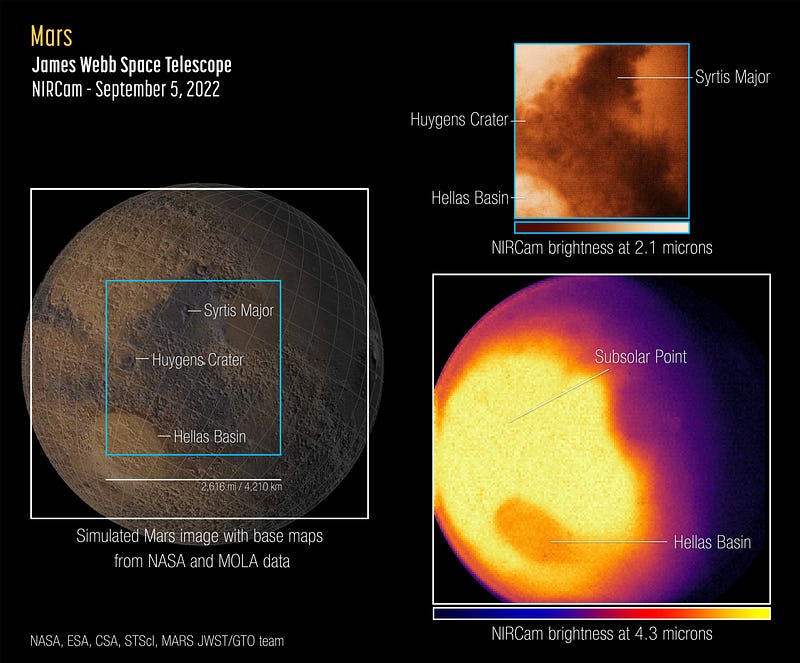Mars Exploration: Unraveling Mysteries with Webb and Perseverance
Written on
Chapter 1: Mars Through the Webb Lens
The Red Planet is once again capturing our attention with exciting discoveries related to oxygen generation and organic matter, all thanks to observations made by the Webb telescope.

NASA's Perseverance rover, which touched down on Mars in February of the previous year, has made significant strides in exploring the planet's atmosphere and geology. One of its most impressive achievements has been the production of breathable oxygen via its MOXIE device.
The Mars Oxygen In-Situ Resource Utilization Experiment (MOXIE), led by MIT, has been successfully converting the carbon-dioxide-heavy atmosphere of Mars into oxygen since April 2021. Recent studies have demonstrated that MOXIE can produce up to six grams of oxygen per hour, comparable to what a small tree generates, regardless of seasonal or atmospheric changes.
An even more groundbreaking development involves the retrieval of intriguing organic rock samples from an ancient river delta on Mars. The highest concentration of these organic samples has been stored for a future mission aimed at returning them to Earth for further analysis. This discovery could be pivotal in the quest to understand if life ever existed on Mars.
Section 1.1: Webb's Insights into Mars
“Building on previous missions and without the constraints of Earth's atmosphere for ground-based spectroscopy, Webb will provide us with valuable insights into important areas such as the historical presence of water on Mars.”
~ Chris Evans, Webb Project Scientist

It has been nearly three months since the James Webb Space Telescope, affectionately known as 'Webb', commenced its operations. The telescope has already captivated us with breathtaking images of far-off galaxies and dazzling nebulae. Recently, it directed its focus to our solar system, unveiling stunning visuals of Jupiter before setting its sights on Mars.
Using its Near-Infrared Camera (NIRCam) and Near-Infrared Spectrograph (NIRSpec), Webb captured remarkable images of the Red Planet.

The telescope observed the sunlit Eastern Hemisphere of Mars from approximately 932,000 miles (1.5 million kilometers) away at the Sun-Earth Lagrange Point 2. The images showcase Mars in two different near-infrared wavelengths — 2.1 microns and 4.3 microns — which are not visible to the human eye. The surface reference map on the left was created using data from NASA and the Mars Orbiter Laser Altimeter (MOLA).
Astronomers will now scrutinize the gathered data to extract further information about the planet's surface and atmosphere. A key aim of directing Webb toward our celestial neighbor is to evaluate the telescope's reliability and accuracy in studying both nearby and distant astronomical bodies. Meanwhile, we remain in awe of Webb's remarkable capabilities.
Chapter 2: Videos on Mars Exploration
In the first video, "Eyes on the Sky: Observing Mars," viewers are treated to a closer look at the latest findings from Mars, including atmospheric studies and surface exploration conducted by the Webb telescope.
The second video, "Interactive Stargazing & Mars Opposition Week 2," offers an engaging experience of Mars opposition, providing viewers with insights into stargazing techniques and the significance of this astronomical event.